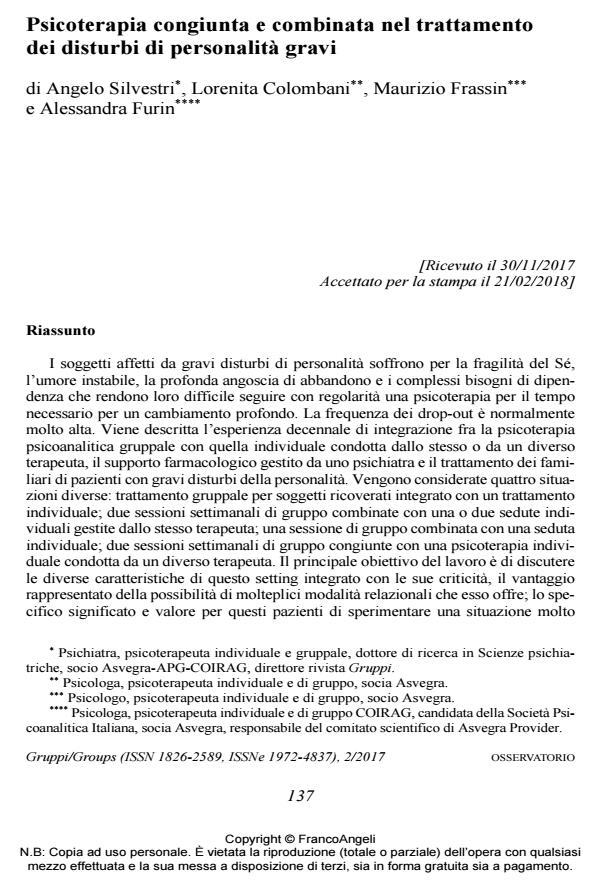Conjoint and combined therapy for severe personality disorders
Journal title GRUPPI
Author/s Angelo Silvestri, Lorenita Colombani, Maurizio Frassin, Alessandra Furin
Publishing Year 2018 Issue 2017/2
Language Italian Pages 10 P. 137-146 File size 166 KB
DOI 10.3280/GRU2017-002011
DOI is like a bar code for intellectual property: to have more infomation
click here
Below, you can see the article first page
If you want to buy this article in PDF format, you can do it, following the instructions to buy download credits

FrancoAngeli is member of Publishers International Linking Association, Inc (PILA), a not-for-profit association which run the CrossRef service enabling links to and from online scholarly content.
People with severe personality disorders suffer from Self-fragility, unstable mood, deep fear of abandonment and complexes dependency needs that make hard to attend regularly a psychotherapy for the time required for a deep change. The drop-out rate is usually very high. We will describe a decennial experience of heterogeneous psychoanalytic group psychotherapy for patients with severe personality disorders integrated with individual psychotherapy from the same or another therapist, pharmacological support from a psychiatrist and family members treatment. Four situations are considered: inpatient group and individual psychotherapy; two sessions of group combined with one or two sessions of individual psychotherapy; one session of group combined with one session of individual psychotherapy; biweekly group psychotherapy conjoined with another individual psychotherapy. The primary focus of this work is to discuss the setting’s characteristics and criticality, the benefit of multiple relational modalities into the therapy, the specific meaning and value for these patients to experience a very containing situation, where to explore their inner worlds and relations reciprocally.
Keywords: Personality disorders, Group psychotherapy, Drop-out, Conjoin psychotherapy, Combined psychotherapy, Group analisys.
Angelo Silvestri, Lorenita Colombani, Maurizio Frassin, Alessandra Furin, Psicoterapia congiunta e combinata nel trattamento dei disturbi di personalità gravi in "GRUPPI" 2/2017, pp 137-146, DOI: 10.3280/GRU2017-002011